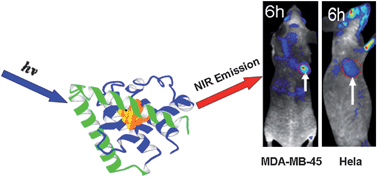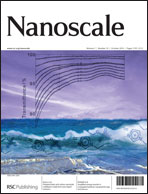In this paper, we explore the possibility of using ultrasmall near-infrared (NIR) gold nanoclusters (AuNCs) as novel contrast imaging agents for tumor fluorescence imaging in vivo. The fluorescence imaging signal of the tail vein administrated AuNCs in living organisms can spectrally be well distinguished from the background with maximum emission wavelength at about 710 nm, and the high photostability of AuNCs promises continuous imaging in vivo. The uptake of AuNCs by the reticuloendothelial system is relatively low in comparison with other nanoparticle-based contrast imaging agents due to their ultrasmall hydrodynamic size (∼2.7 nm). Through the body weight change analysis, the results show that the body weight of the mice administrated with AuNCs has not been changed obviously in comparison with that of the control mice injected with PBS. Furthermore, using MDA-MB-45 and Hela tumor xenograft models, in vivo and ex vivo imaging studies show that the ultrasmall NIR AuNCs are able to be highly accumulated in the tumor areas, thanks to the enhanced permeability and retention (EPR) effects. And the tumor-to-background ratio is about 15 for 6 h postinjection. The results indicate that the ultrasmall NIR AuNCs appear as very promising contrast imaging agents for in vivo fluorescence tumor imaging.

You have access to this article
 Please wait while we load your content...
Something went wrong. Try again?
Please wait while we load your content...
Something went wrong. Try again?


 Please wait while we load your content...
Please wait while we load your content...